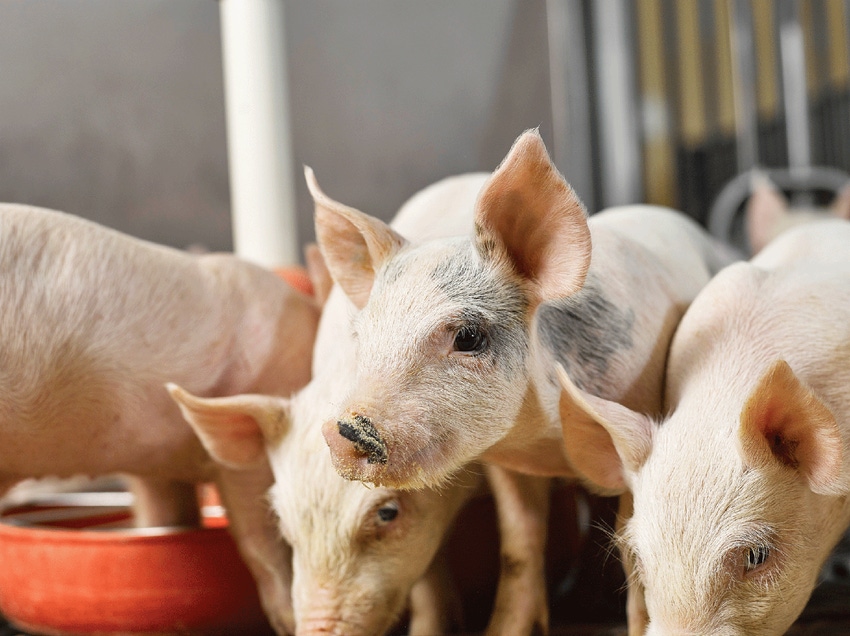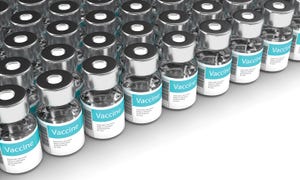High-fiber diets: More threonine needed during immune challenge?
Research Review: Both dietary fiber and immune stimulation increased the requirement for threonine for protein deposition in growing pigs; however, the interaction of the two factors did not result in a further increase.
January 7, 2019

Researchers: Dan Columbus, Prairie Swine Centre; Michael Wellington and Andrew Van Kessel, University of Saskatchewan Department of Animal and Poultry Science; and John Htoo, Evonik Nutrition & Care
Since antibiotics are no longer used in feed for growth promotion, it has become even more important to understand nutrient requirements during disease challenge events. With more diets containing co-products, such as dried distillers grains with solubles, there has been a more specific emphasis on studying the interaction between high-fiber diets and immune challenges.
Feeding high-fiber feedstuffs reduces the efficiency of use of dietary threonine for growth in pigs due to an increase in endogenous threonine loss as a result of increased mucin production. While an increased threonine requirement has been shown with increased fiber (mucin production) and with immune challenges (immunoglobulin production), the interaction of these factors on threonine requirements is unknown.
A team of Prairie Swine Centre and University of Saskatchewan researchers recently conducted a nitrogen-balance study in growing pigs fed high- or low-fiber diets, and with or without immune system stimulation, to determine the optimum dietary threonine content for maximum growth and immune status.
Nitrogen balance
A total of 90 growing barrows were used in the nitrogen-balance study. The dietary treatments were arranged in a five-times-two factorial randomized complete block with 10 pigs per block at an initial body weight of 20.5 kg. The main factors were 1) threonine level (0.49, 0.57, 0.65, 0.73, and 0.81% standardized ileal digestible) and 2) fiber level (high fiber or low fiber). Pigs were fed at 2.2 times maintenance metabolizable energy requirements in two meals per day. Fiber was added as 5% wheat bran and 10% sugar beet pulp.
Feed refusals and wastages were collected for each pig daily and weighed to determine actual daily feed intake. Water was provided ad libitum through nipple drinkers. Nitrogen-balance was conducted during pre-ISS and ISS periods of four days each.
At the start of the ISS period, pigs were injected intramuscularly with E. coli lipopolysaccharide at least one hour before the morning meal to stimulate the immune system. LPS injection was repeated 48 hours after the first injection to maintain ISS. The initial dosage was 30 μg per kg of body weight, which was increased by 15% on the second injection to counteract the possibility of tolerance.
Nitrogen balance was determined as the difference between nitrogen intake and nitrogen excretion (urine and feces), with protein deposition determined as nitrogen retained times 6.25.
Impact of dietary threonine
The analyzed total dietary fiber content was higher (18.5%) in the high-fiber diets than the low-fiber diets (12.5%). The total indispensable analyzed and calculated amino acid content of the experimental diets were similar.
During pre-ISS, protein deposition increased linearly (P < 0.01) as threonine concentration in the diet increased with a significant interaction (P < 0.05) between fiber and threonine.
During ISS, PD increased linearly (P<0.05) as threonine concentration in the diet increased. A curvilinear plateau model estimated that the SID threonine required to maximize PD of pigs fed low- and high-fiber diets during the pre-ISS period was 0.68% and 0.78%, respectively.
During ISS, SID threonine was estimated at 0.76% for pigs fed the low-fiber diet and 0.72% for pigs fed the high-fiber diet. High fiber and ISS independently increased threonine requirement for maximum PD, but these effects were not additive.
No further threonine increase
Both dietary fiber and immune stimulation increased the requirement for threonine for protein deposition in growing pigs; however, the interaction of the two factors did not result in a further increase. It is important to note that these results may be dependent on the type of immune challenge used in the study.
The researchers say an increased understanding of the interaction of dietary factors and stressors on nutrient requirements will be critical for developing feeding programs that enhance both animal production and animal health, while reducing the use of antibiotics.
Information generated from this project will aid in the development of effective techniques and protocols that reduce the negative effects of disease and stress on pig performance, as well as nutrition alternatives to antibiotics.
The full research publication can be found at Wellington et al. 2018. J. Anim. Sci. For more information, contact Dan Columbus.
You May Also Like



